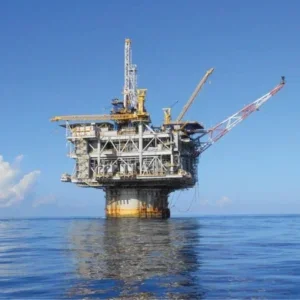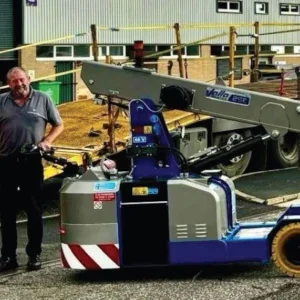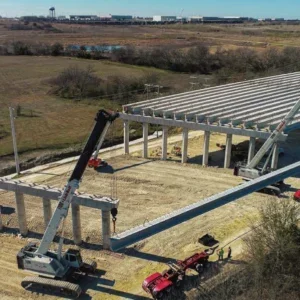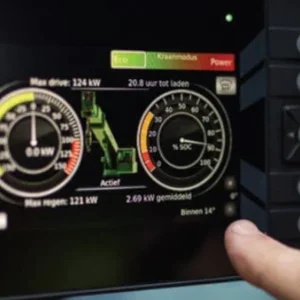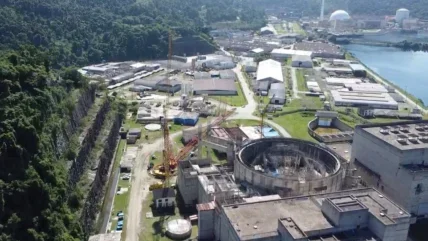
Restoring a crane more than 40 years old is no easy task – especially when it has stood idle on the Brazilian coast for over six years, exposed to the elements.
Eletronuclear, the Brazilian state power company, originally purchased the Manitowoc 4600 lattice-boom crawler crane back in 1982. Its primary task was helping to build Angra 2, the second reactor at the Angra nuclear power plant in Rio de Janeiro.
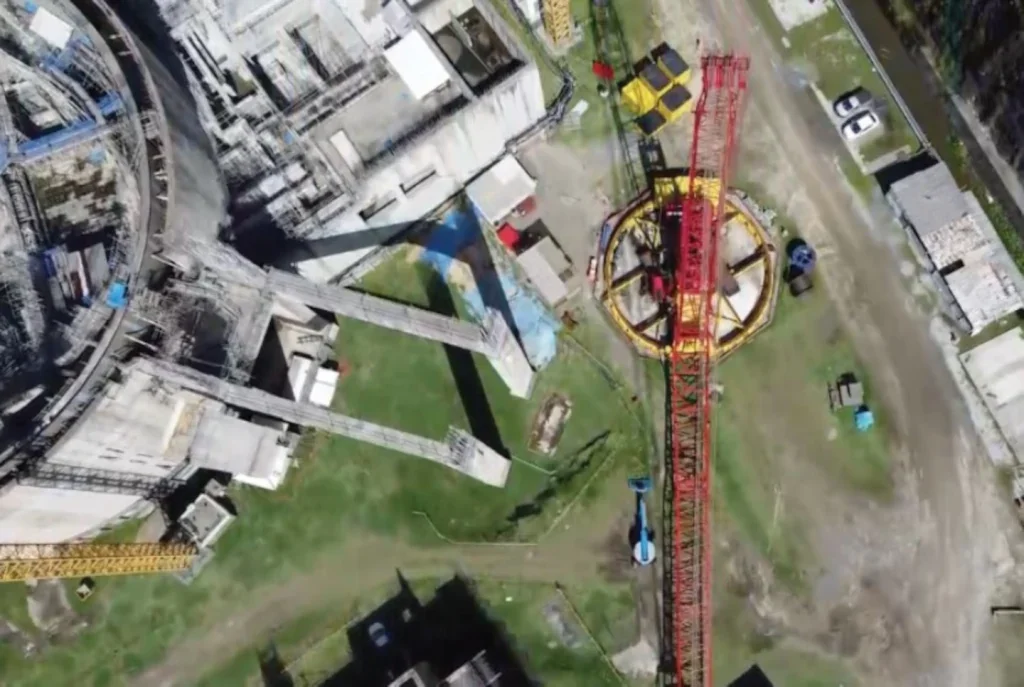
For 40 years, the Manitowoc crane has been part of the landscape at the Central Nuclear Almirante Álvaro Alberto complex, where the three Angra plants are located. After building Angra 2, in 2000, the crane was assigned to build the third reactor, but the project was shelved.
In the early 2020s, work resumed on Angra 3. Its siblings already provide about 3% of Brazil’s energy needs, with Angra 3 expected to generate sufficient power to supply another 4.5 million inhabitants in the region.
Eletronuclear needed the 4600 to complete the construction. However, Angra 3 has experienced multiple delays, meaning the crane had been parked outdoors for almost six years. During this time, it suffered severe corrosion damage due to direct exposure to rain, extreme heat, and the salty coastal sea winds.
Eletronuclear carried out a cost-benefit analysis to identify if it was better to refurbish the crane or bring in a new machine. Bruno Bertini, head of the electromechanical assembly department at Eletronuclear, said: “The savings from rebuilding the 4600, compared to renting another crane, were crucial.
“Additionally, having Manitowoc, the manufacturer, lead this project gave us the reassurance to go for a complete and certified renovation,” Bertini said. “We knew that it would be a big challenge, but throughout the process we saw Manitowoc’s commitment to the quality of the service provided.”
EXTENSIVE PROJECT
The full refurbishment took 22 months and involved 12 experts from Manitowoc’s EnCORE programme, located in both Brazil and the USA.
In addition to replacing parts and components, the EnCORE team updated the crane’s operating system and installed a modern load monitoring system, providing the operator with the information they need to work efficiently.
Ricardo Cunha, product support manager at Manitowoc in Brazil, said: “As we disassembled the equipment, we needed to replace parts of the structure and more than 600 critical components, including motors, pumps, valves, and sensors. Some of these parts were not easy to find – it is a unique crane that was mounted in a ring construction.
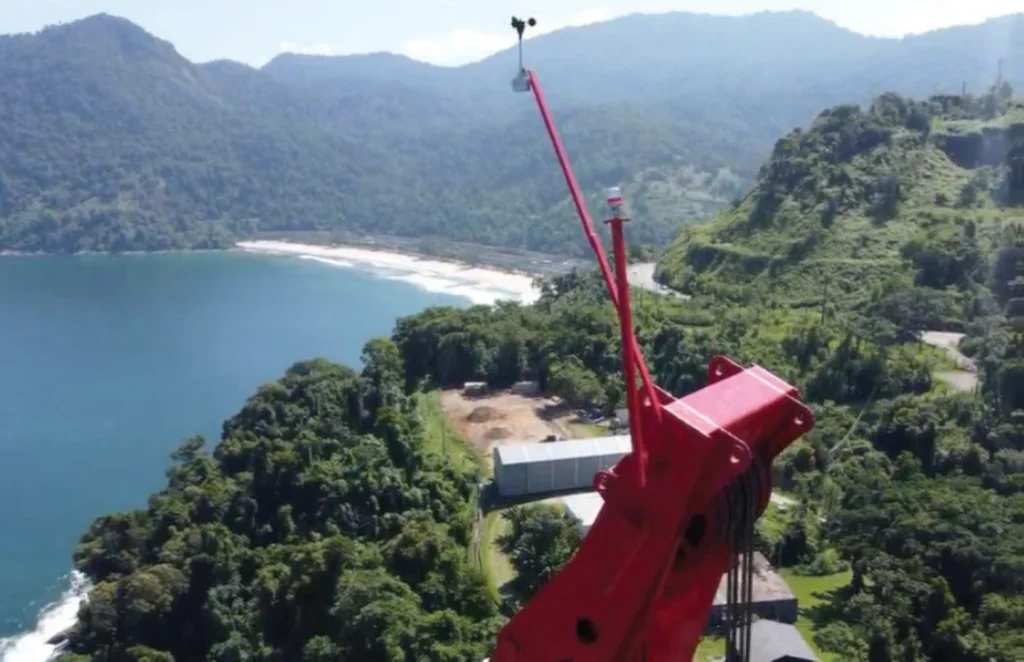
There are not many others like it in the world.”
However, this uniqueness also made the 4600 so vital to the project. The crane’s main boom is positioned on the ringer, supporting the counterweight. The configuration ensures greater lifting capacity in larger operating envelope when compared with other similar cranes. For Angra 3, this enables the crane to erect parts weighing up to 80t at a height of 42m and a radius of up to 60m.
“Because of the ringer configuration, the 600t-capacity Manitowoc 4600 crane can lift very heavy metal parts used to construct the plant’s reactor from a long distance,” added Ricardo. “If they had opted for new mobile equipment, they would have to use a crane with much higher capacity to carry out the same task.”
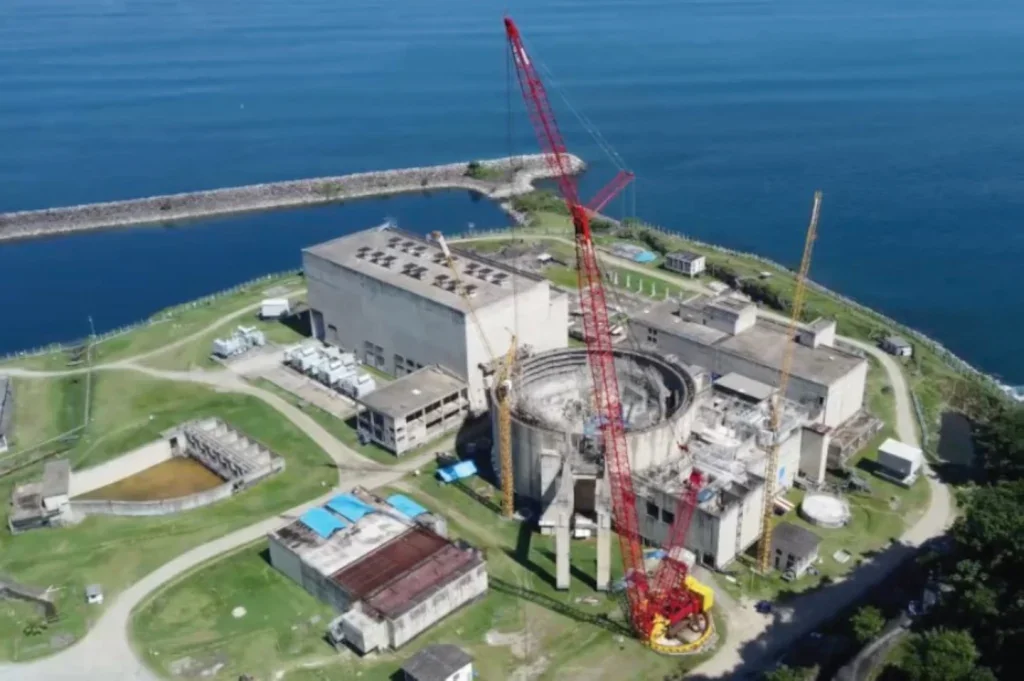
The crane is a legend in the Brazilian lifting industry and its restoration is a point of pride.
“This is the largest and oldest machine in our yard,” said Bruno. “It is part of the history of Angra NPP. We often receive nostalgic messages from former operators asking about the crane’s renovation and when it will work again. It is fantastic to see it fully renovated, ready to return to work.”


